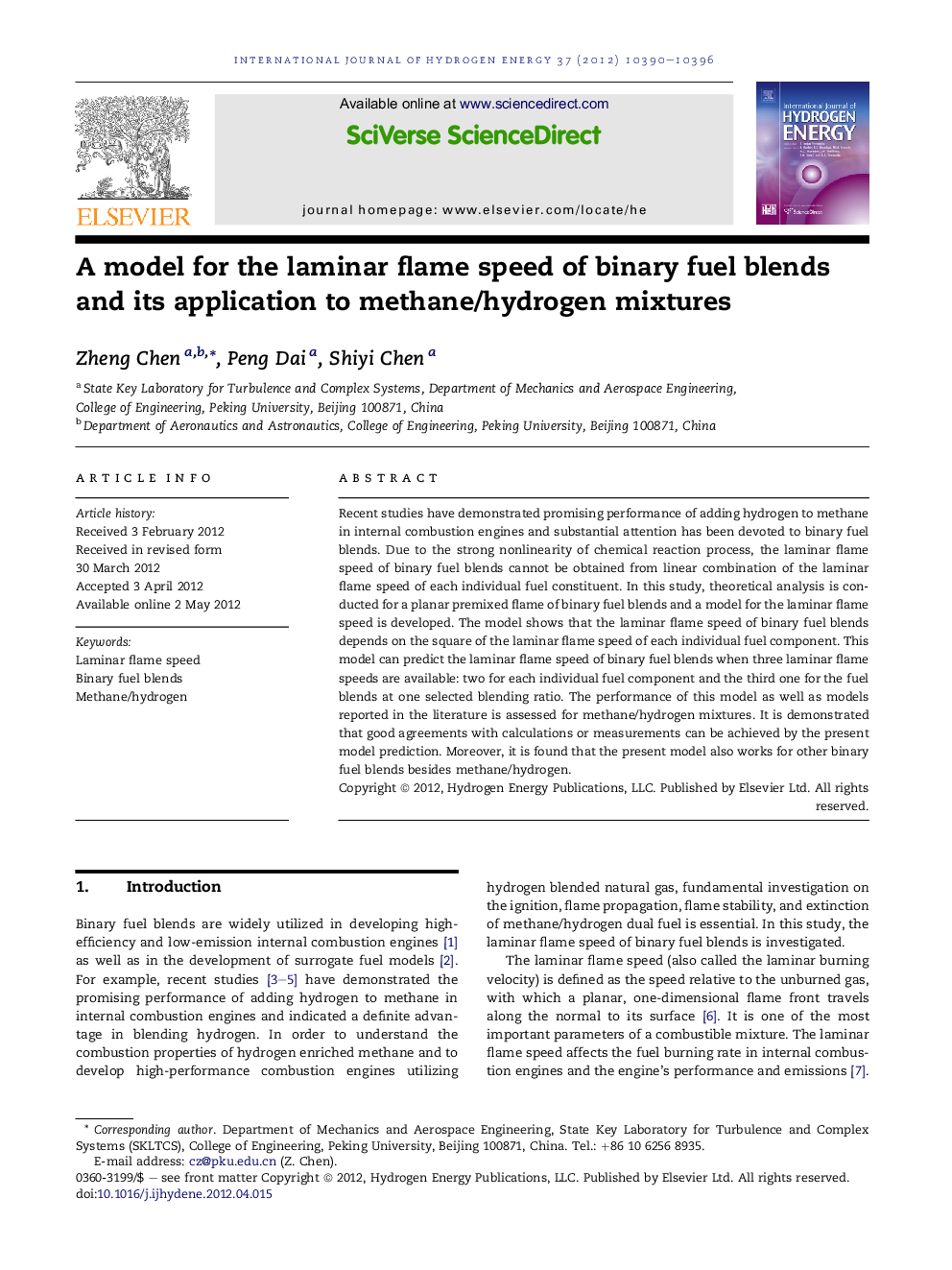| Article ID | Journal | Published Year | Pages | File Type |
|---|---|---|---|---|
| 1275229 | International Journal of Hydrogen Energy | 2012 | 7 Pages |
Recent studies have demonstrated promising performance of adding hydrogen to methane in internal combustion engines and substantial attention has been devoted to binary fuel blends. Due to the strong nonlinearity of chemical reaction process, the laminar flame speed of binary fuel blends cannot be obtained from linear combination of the laminar flame speed of each individual fuel constituent. In this study, theoretical analysis is conducted for a planar premixed flame of binary fuel blends and a model for the laminar flame speed is developed. The model shows that the laminar flame speed of binary fuel blends depends on the square of the laminar flame speed of each individual fuel component. This model can predict the laminar flame speed of binary fuel blends when three laminar flame speeds are available: two for each individual fuel component and the third one for the fuel blends at one selected blending ratio. The performance of this model as well as models reported in the literature is assessed for methane/hydrogen mixtures. It is demonstrated that good agreements with calculations or measurements can be achieved by the present model prediction. Moreover, it is found that the present model also works for other binary fuel blends besides methane/hydrogen.
► Theoretical analysis is conducted for a planar premixed flame of binary fuel blends. ► A model for the laminar flame speed of binary fuel blends is proposed. ► This model works for methane/hydrogen and other binary fuel blends.
